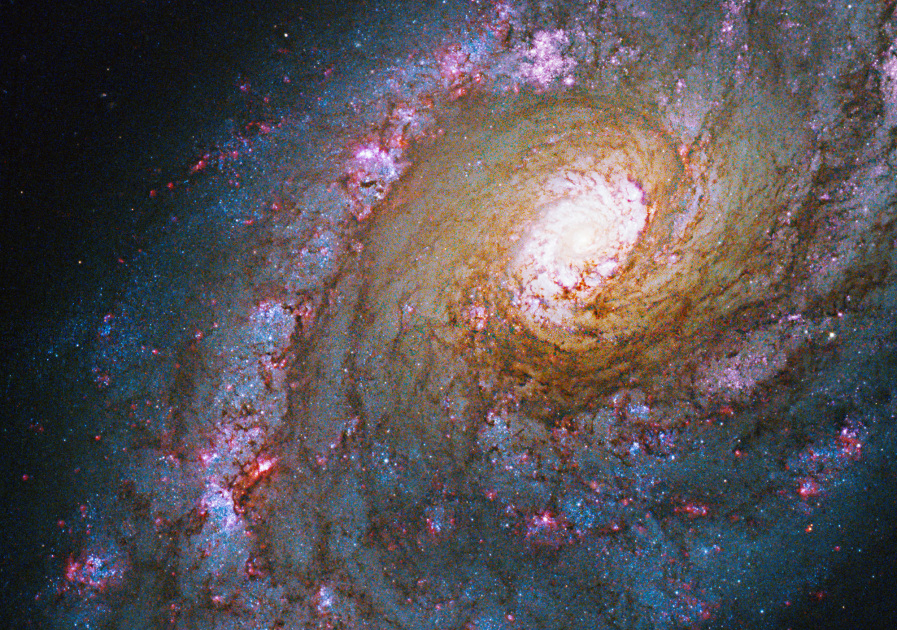With the 30 additional images, Hubble’s collection now includes 87 of the 109 Caldwell objects. One of the more dramatic images at the top is Caldwell 45, or NGC 5248, a spiral galaxy in the constellation of Boötes, known for the ring structure around its core.
This particular image, along with others in the Caldwell catalog, is a composite made of several Hubble instruments, including the Wide Field Camera 3 and Wide Field and Planetary Camera 2 in visible, infrared and ultraviolet light. “It captures the glowing red clouds where new stars are forming, scattered along the twisting arms of the galaxy,” NASA said. “These observations … were made to help astronomers learn more about gas in the starburst regions of the galaxy, and better understand the structure of its nuclear rings.”
While you may not have access to such advanced equipment, you can see this cluster with a small telescope, “although it won’t appear very bright,” NASA said. NASA includes a graph showing roughly where to find it and the best time to see it (summer), and other sites like Go for astronomy show more accurate celestial coordinates. The great thing about star catalogs like Caldwell and Messier is that they help you discover these incredible objects for yourself, sometimes just with binoculars or even with the naked eye.
NASA ordered Hubble to serve five more years in 2016, but that estimate is mixed. There is no set date for Hubble’s retirement. Hubble will continue to operate as long as the components work and it provides a good service to the scientific community, ”the European Space Agency website said. Given the discoveries it is still making, it will hopefully take another 30 years.
